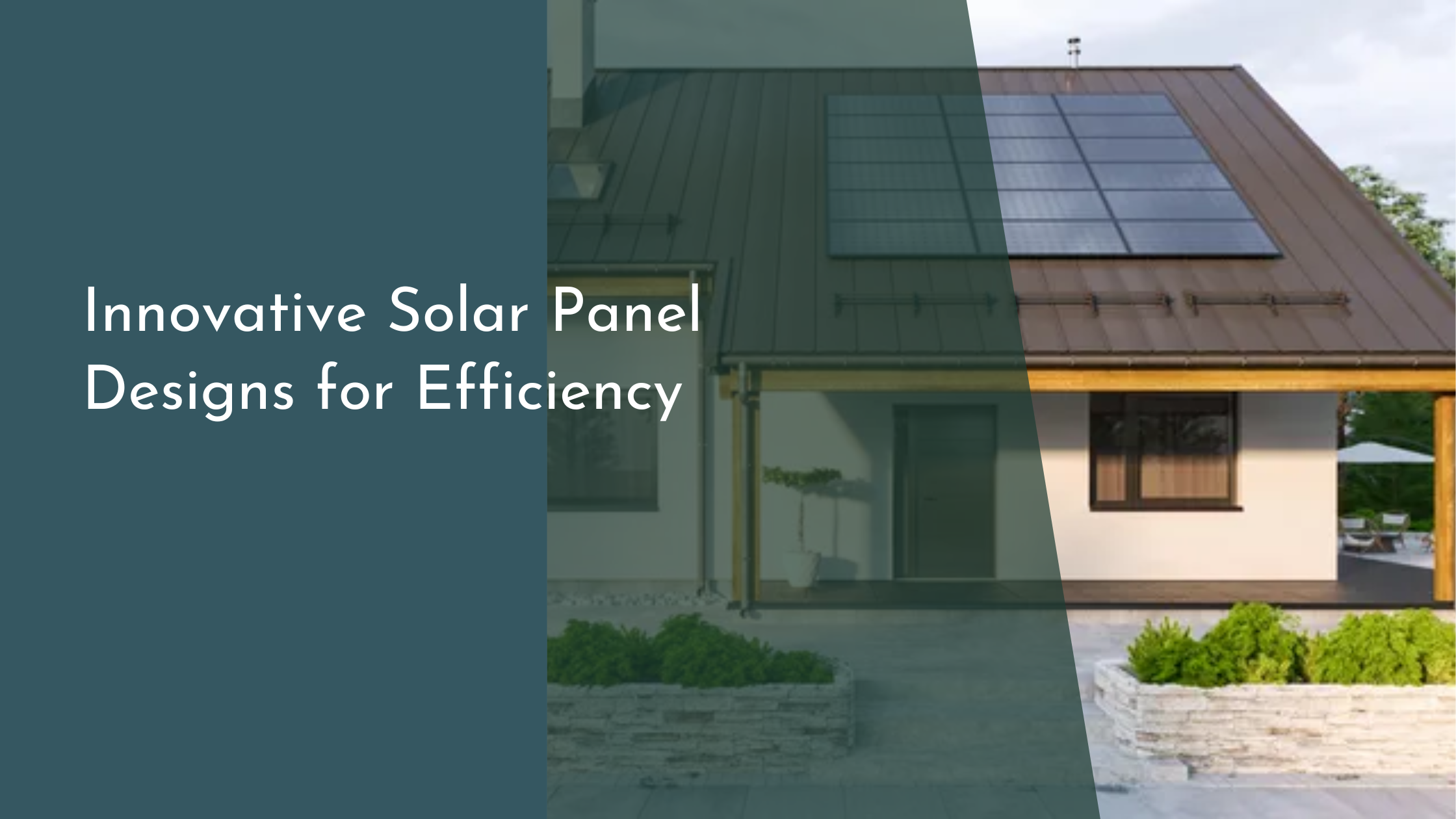Innovative Solar Panel Designs for Efficiency
The realm of solar energy is evolving rapidly, with innovative solar panel designs pushing the boundaries of efficiency and sustainability. As the world increasingly shifts towards renewable energy sources, the demand for more efficient and cost-effective solar technologies has never been greater. This article explores the latest advancements in solar panel design, from cutting-edge materials to novel architectural approaches that promise to revolutionize the way we harness the power of the sun.
Introduction to Cutting-Edge Solar Technologies
The solar energy sector is undergoing a transformative change, driven by advances in technology and materials science. Traditional silicon-based solar panels are being outpaced by new, more efficient designs that promise to capture more sunlight and convert it into usable energy with greater efficiency. Researchers and companies are focusing on developing solar panels that not only perform better but are also more versatile and adaptable to various environments. This shift is giving rise to a new generation of solar technologies that combine aesthetics, efficiency, and accessibility.
One of the most exciting developments in this field is the integration of solar panels into everyday materials, such as windows and building facades. These innovative designs enable buildings to generate their own energy without the need for traditional rooftop panels. By embedding solar cells into transparent or semi-transparent surfaces, architects are able to create structures that are not only self-sufficient in energy but also visually appealing. This dual approach to design and functionality is setting the stage for a future where solar energy is seamlessly integrated into our daily lives.
Breakthroughs in Panel Material Innovations
Material science is at the forefront of solar panel innovation, with new materials emerging that promise to significantly improve efficiency and reduce costs. One of the most promising developments is the use of perovskite solar cells. These materials have shown remarkable efficiency rates in laboratory settings and are easier and cheaper to produce than traditional silicon cells. The flexibility and lightweight nature of perovskites also open the door to new applications, such as wearable solar devices and flexible solar films that can be applied to a variety of surfaces.
Another notable material breakthrough is the development of organic photovoltaics (OPVs). These are composed of carbon-based materials and offer several advantages, including lower production costs and a smaller environmental footprint. OPVs are flexible, lightweight, and can be produced in a range of colors, allowing for greater design versatility. While OPVs currently lag behind traditional solar cells in terms of efficiency, ongoing research aims to close this gap, making them a viable option for sustainable energy generation in the near future.
Advanced Design Techniques for Maximum Output
To maximize solar energy capture, innovative design techniques are being employed that enhance the ability of solar panels to adjust to varying sunlight conditions. One such technique involves bifacial solar panels, which capture sunlight from both sides of the panel. By utilizing both the direct and reflected sunlight, bifacial panels can achieve up to 20% more energy output compared to traditional models. This design is particularly effective in areas with high albedo, such as snowy or sandy environments, where additional light can be reflected onto the panels.
Another advanced design approach is the use of concentrated solar power (CSP) systems. These systems employ mirrors or lenses to concentrate a large area of sunlight onto a small area of photovoltaic material, significantly increasing the amount of energy generated. CSP systems are highly efficient and can be integrated with thermal storage systems, allowing for energy generation even when the sun is not shining. This approach not only enhances energy output but also provides a reliable and continuous power supply.
Future Prospects and Sustainable Solutions
Looking ahead, the future of solar panel technology seems bright, with ongoing research focused on making solar energy more accessible and efficient for everyone. One promising area of development is solar photovoltaics that incorporate artificial intelligence and machine learning. By using AI to predict and optimize solar energy production based on weather patterns and usage data, these smart systems aim to further enhance solar energy efficiency and reliability.
Sustainability remains a core focus of solar technology innovation, with efforts underway to develop recyclable solar panels and reduce the environmental impact of solar energy production. As solar technology continues to evolve, it holds the potential to become a cornerstone of sustainable energy solutions worldwide, reducing our reliance on fossil fuels and paving the way for a cleaner, more sustainable future.
The strides being made in solar panel design and technology are nothing short of revolutionary. With breakthroughs in materials, innovative design techniques, and a strong focus on sustainability, solar energy is set to play a pivotal role in the global energy landscape. As these technologies continue to advance, they hold the promise of not only addressing our current energy needs but also contributing to a more sustainable and energy-independent future for generations to come.

